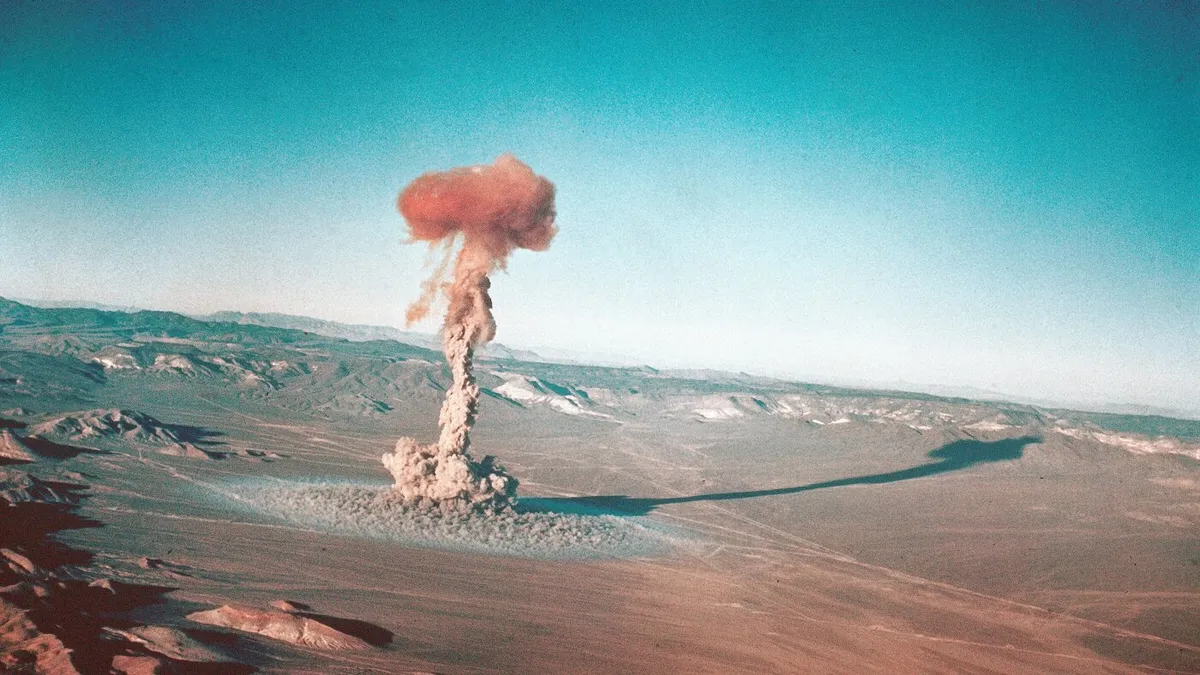
On Thursday, President Trump revealed that the United States may begin testing nuclear weapons again for the first time in decades. Speaking to reporters aboard Air Force One, he stated, “We've halted many years ago, but with others doing testing, I think it's appropriate to do so.” This announcement has raised significant concerns among experts, who warn that resuming nuclear testing could represent a serious escalation in global nuclear tensions and disrupt the delicate nuclear balance of power.
Corey Hinderstein, vice president for studies at the Carnegie Endowment for Nuclear Peace, expressed grave concerns regarding Trump's announcement. He stated, “A decision to resume nuclear testing would be extremely dangerous and would do more to benefit our adversaries than the United States.” As geopolitical tensions rise, the implications of such a decision could be far-reaching, affecting not just U.S. security but global stability as well.
Currently, the only location in the U.S. capable of conducting a nuclear test is the Nevada National Security Site, situated approximately 60 miles northwest of Las Vegas, Nevada. Robert Peters, a senior research fellow for strategic deterrence at the Heritage Foundation, noted that this site spans around 1,300 square miles, making it larger than the state of Rhode Island. Although atmospheric nuclear tests were conducted here starting in the 1950s, testing shifted underground from 1962 to 1992. Today, any potential tests would likely occur in deep underground mineshafts.
According to Peters, underground testing involves drilling a deep shaft below ground or into a mountain’s side, where a nuclear device is placed in a sealed chamber at the shaft's end. This method of detonation is designed to contain the explosion within the rock, significantly reducing the risk of atmospheric fallout. However, Hinderstein cautions that even underground testing is not without risks, as past incidents have shown that radioactive fallout can occasionally leak from test shafts. Additionally, seismic activity from the tests could potentially damage buildings in nearby Las Vegas, including high-profile structures such as the Stratosphere and the Trump Hotel.
The last nuclear test conducted by the United States took place over 30 years ago, following a voluntary moratorium established by major nuclear powers at the end of the Cold War. Russia, then the Soviet Union, conducted its final test in 1990, while China’s last test occurred in 1996. This moratorium was intended to promote nuclear stability globally. Instead of conducting tests, the U.S. currently relies on advanced scientific experiments and supercomputer simulations to ensure the reliability of its nuclear arsenal.
According to Don Haynes, a nuclear weapons scientist from the Los Alamos National Laboratory, the U.S. is still confident in its ability to maintain its nuclear arsenal without the need for testing. He noted that while a basic demonstration test could be executed within approximately 18 months, conducting a scientifically valuable test would likely take years. Therefore, many experts argue that the potential benefits of resuming nuclear testing do not outweigh the costs and risks involved.
Trump's announcement appears to be a response to recent nuclear developments by Russia. Just days prior, Russia announced successful tests of a new nuclear-powered cruise missile and a nuclear-powered underwater drone designed to target coastal cities. Although Trump did not mention Russia directly, he hinted that these actions influenced his stance, stating, “I see them testing, and I say, ‘Well if they're going to test, I guess we have to test.’” These provocative actions by Russia raise concerns about the potential for a renewed arms race between the two nations, especially with the expiration of the last nuclear treaty aimed at limiting arsenals looming on the horizon.
Experts like Hinderstein caution that now is not the time for the U.S. to resume nuclear testing. With over a thousand tests conducted by the U.S. at the end of the Cold War—far exceeding China's 45 tests—resuming testing could be more beneficial to other nations than to the United States. Furthermore, the financial implications of nuclear testing are significant, with estimates placing the cost of a single test around $140 million, according to Paul Dean, vice president for global nuclear policy at the Nuclear Threat Initiative.